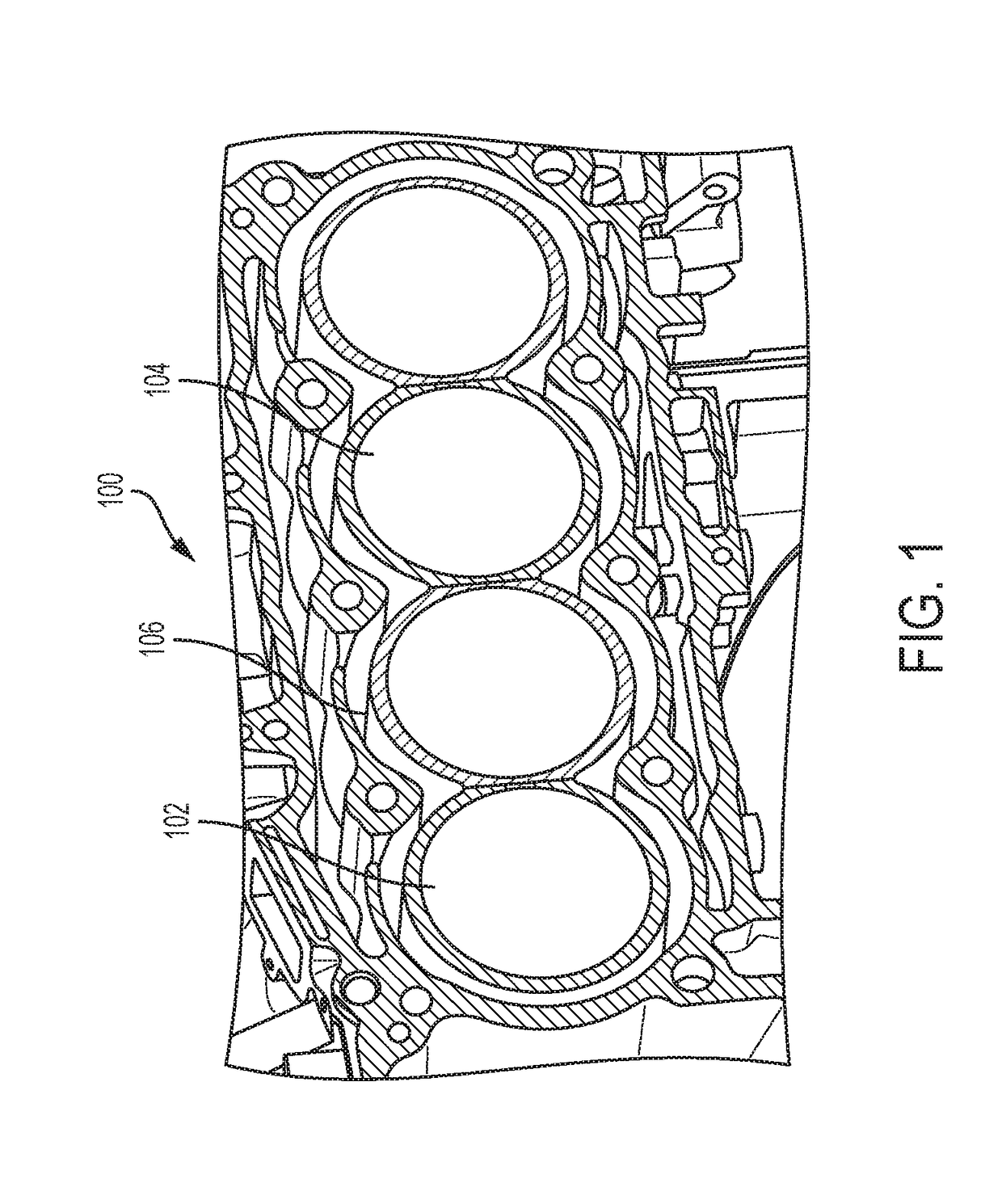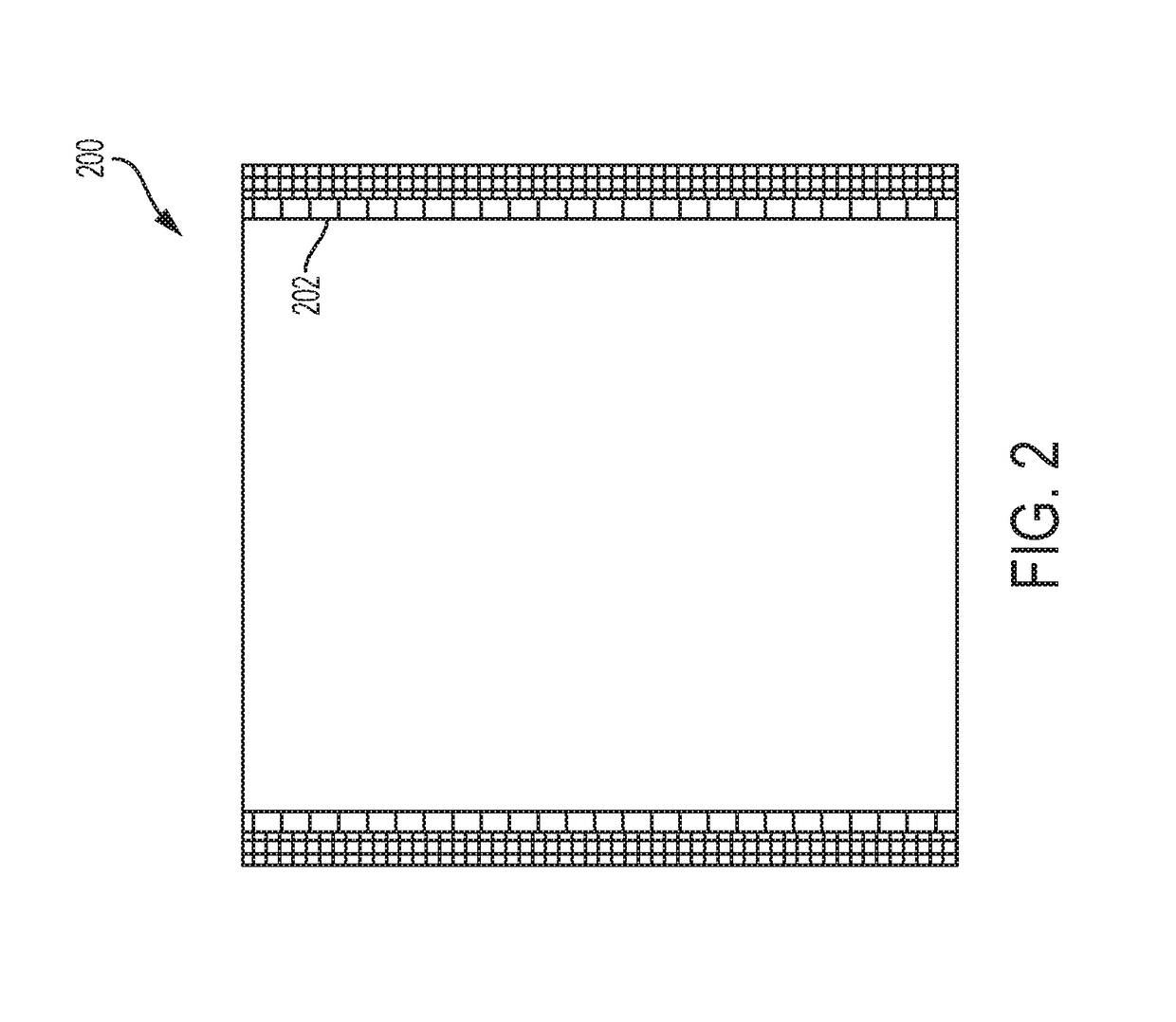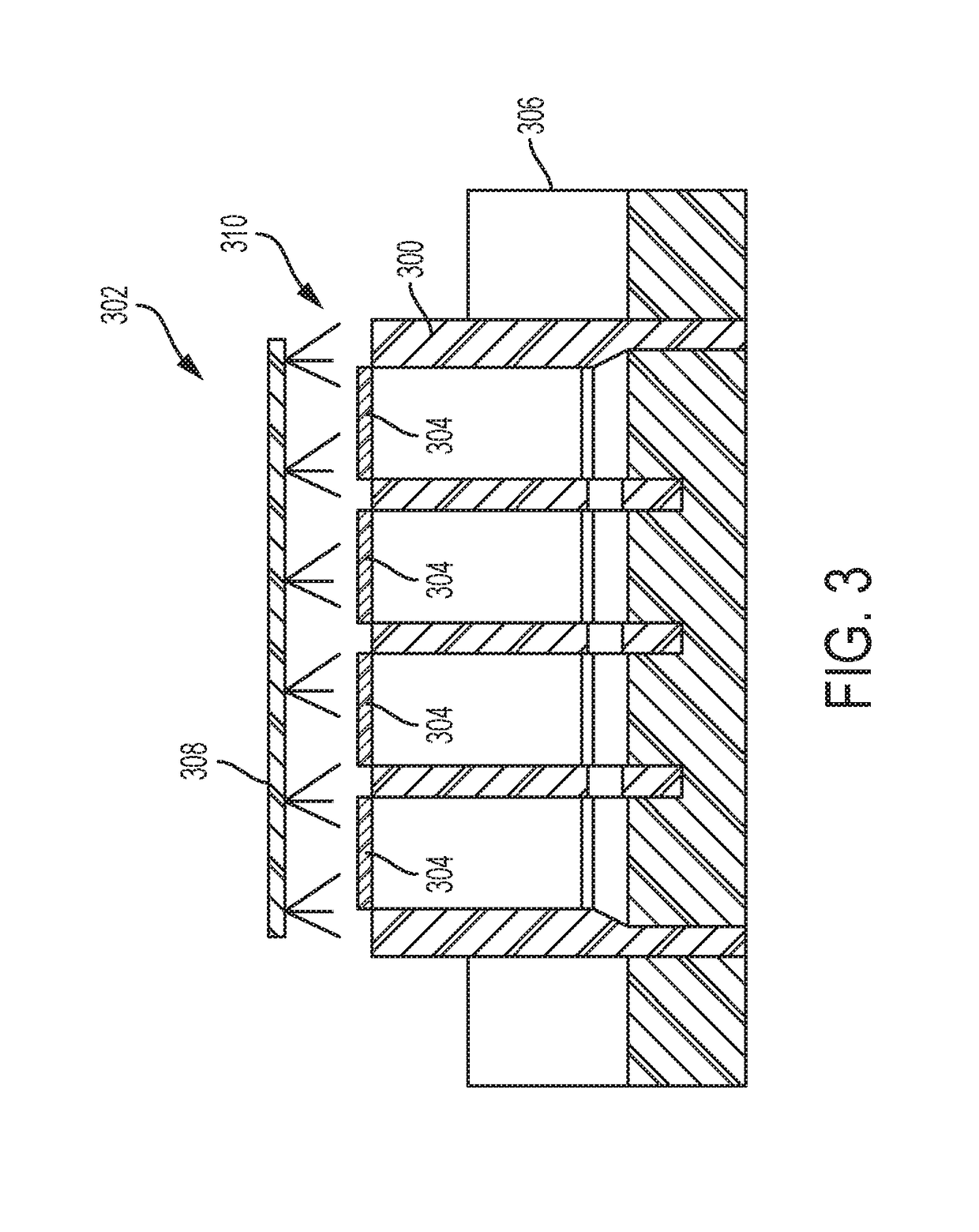Method and system for processing an automotive engine block
a technology for automotive engines and processing methods, applied in the direction of machines/engines, mechanical devices, cylinders, etc., can solve the problems of engine block cracks, unsatisfactory residual stresses, aluminum alloy block residual tensile stress relatively high, etc., to achieve the effect of relieving residual tensile stress
- Summary
- Abstract
- Description
- Claims
- Application Information
AI Technical Summary
Benefits of technology
Problems solved by technology
Method used
Image
Examples
Embodiment Construction
[0025]FIG. 1 illustrates an isometric perspective view of an open deck engine block 100. The engine block 100 includes a plurality of cylinder bores 102 that are defined by cylinder liners 104 which have been integrated into the engine block 100 during, for example, a casting process. In a cast in place process, these cylinder liners 104 may be positioned into a mold and the molten engine block material, such as, for example, an aluminum alloy, may then be injected into the mold. The molten material then surrounds the cylinder liners as it fills the mold. The material cools to a solid and the liners are firmly bonded to the engine block material. In an exemplary process, the casting process may inject the molten engine block material under a high pressure to ensure intimate contact between the engine block material and the cylinder liner.
[0026]FIG. 2 is cross-sectional elevation view of a cylinder liner 200 with an insulating barrier 202 in accordance with an exemplary embodiment of...
PUM
| Property | Measurement | Unit |
|---|---|---|
| particle sizes | aaaaa | aaaaa |
| diameter | aaaaa | aaaaa |
| coefficient of thermal expansion | aaaaa | aaaaa |
Abstract
Description
Claims
Application Information
 Login to View More
Login to View More - R&D
- Intellectual Property
- Life Sciences
- Materials
- Tech Scout
- Unparalleled Data Quality
- Higher Quality Content
- 60% Fewer Hallucinations
Browse by: Latest US Patents, China's latest patents, Technical Efficacy Thesaurus, Application Domain, Technology Topic, Popular Technical Reports.
© 2025 PatSnap. All rights reserved.Legal|Privacy policy|Modern Slavery Act Transparency Statement|Sitemap|About US| Contact US: help@patsnap.com



